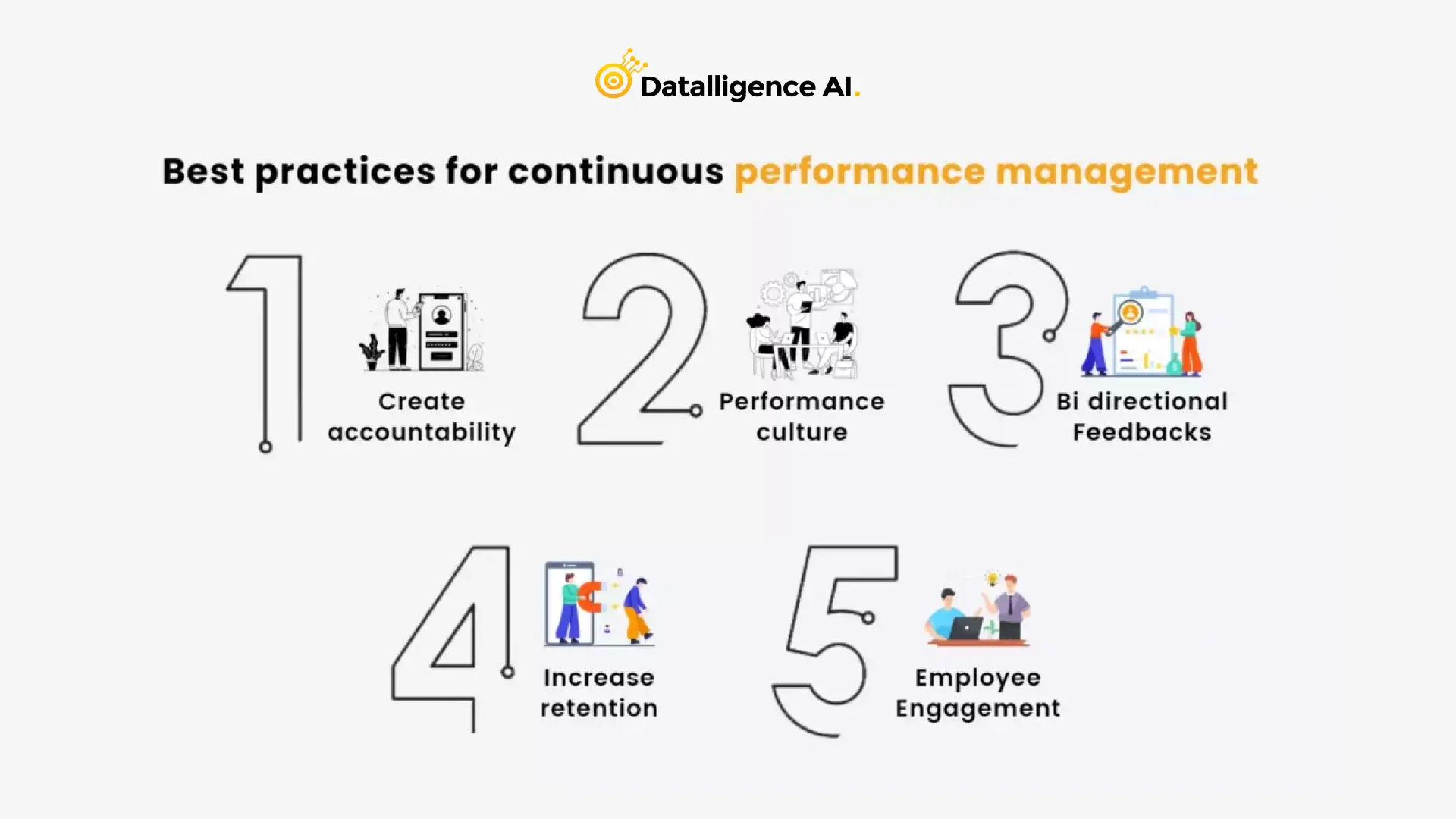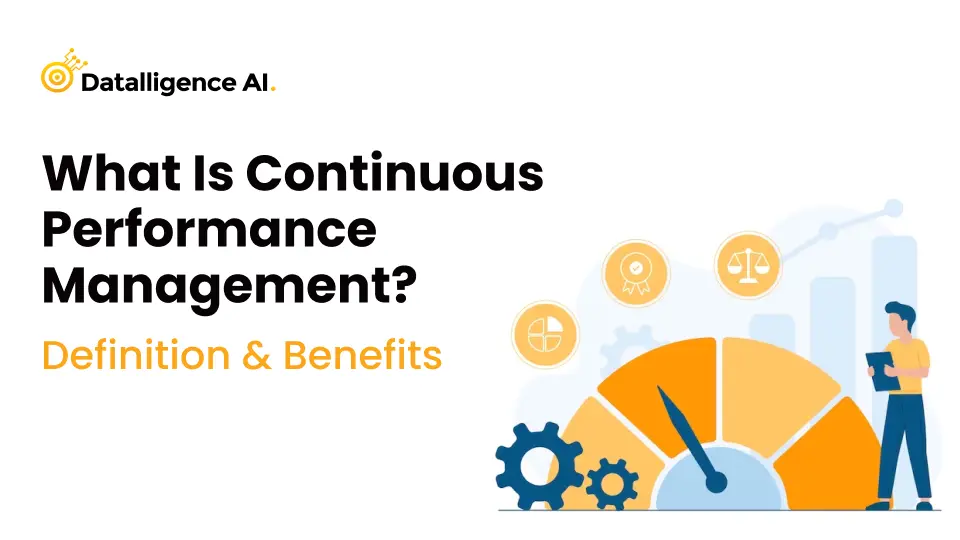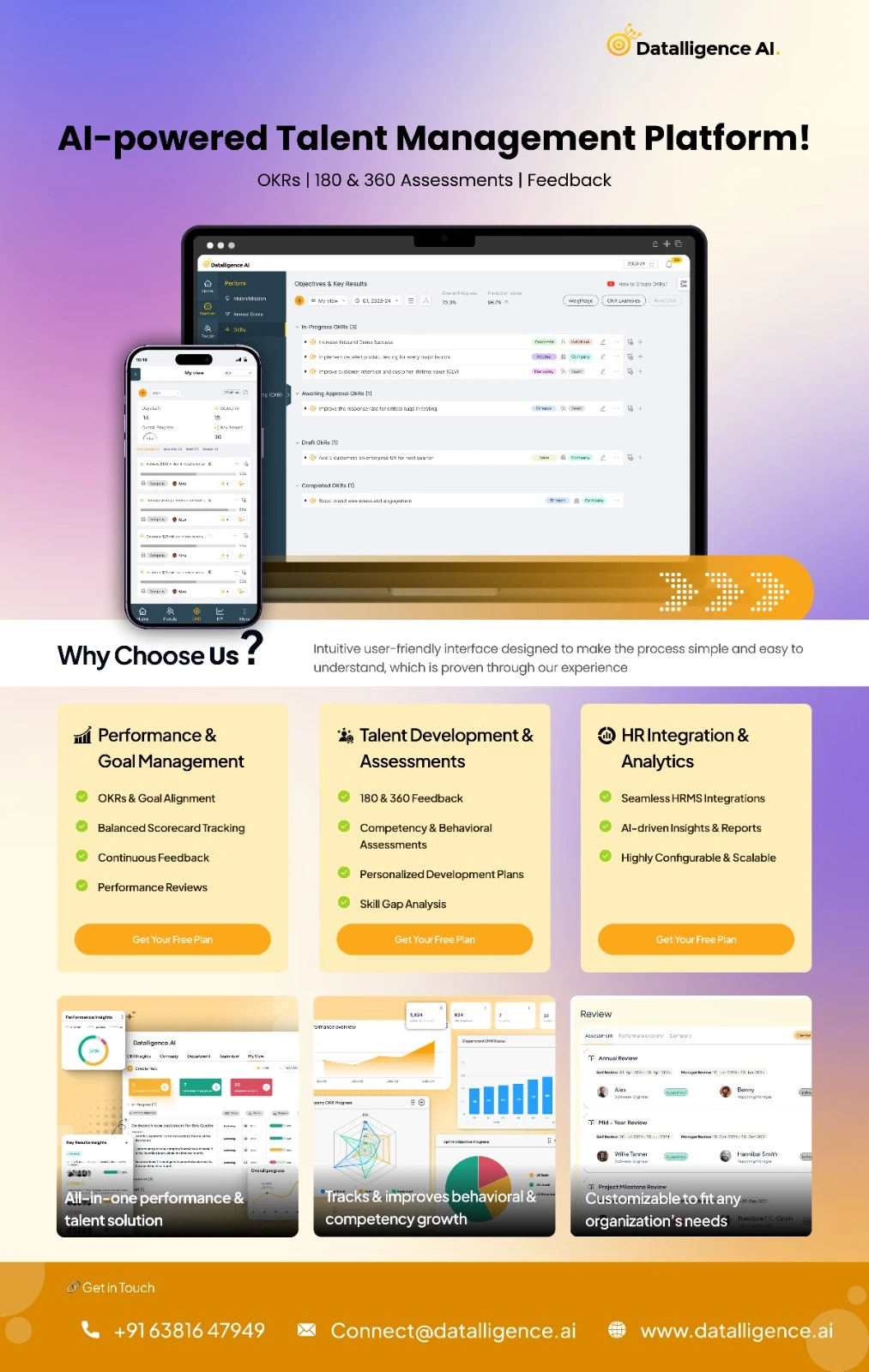Performance management is a traditional practice, but outdated approaches eventually break down and require upgrading. Annual performance reviews and 360-degree feedback tools often damage the entire process. They make performance management overly complicated and confusing.
Continuous performance management focuses on evaluating an employee’s work daily or weekly, rather than just once a month. This new approach eliminates delayed objectives and outdated feedback mechanisms. Instead, it prioritizes speed, agility, and data-driven performance tracking.
One size fits all, is a total myth!
Because one size fits one; Not every employee performs the same and not each one of them has the same skills. Rating each employee at the end of the year, judging each according to the given project, analyzing the performance pattern, and then aligning the discussion with the team leader for promotion eligibility with the critical skills of each employee.
Here companies realize that the process is totally breathtaking and they need to introduce continuous performance management.
What is Continuous performance management 🤔?
Continuous performance management involves conducting ongoing performance reviews throughout the year. Continuous performance management is more real-time, an individualized process to provide regular feedback.
Something like fueling up the future performance of the employee, rather than wasting 200 million hours ( proved in research) in assessing the past performances at the end of the year.
Benefits of continuous performance management 😍
1. Allow companies to recognize performance
Performance recognition has increased more than ever, as team leaders now recognize employees at regular intervals based on their performance brownie points. They actively track each team member’s contributions to every project, extracting a rich stream of information to provide constructive feedback. This process makes it easier to differentiate eligibility for promotions.
2. Boost the morale of the employee
Analyzing a subset of employees based on their immediate project completion and providing timely feedback increases their sense of ownership and boosts their confidence. Continuous performance monitoring ensures that appreciation is never delayed, keeping employees motivated.
3. Positive add on to the work culture
Yearly appraisals are totally broken, hence creating a lot of tension among the team.
To counter such overwhelmed employee behavior of pleasing the team leaders during the end of the month, every organization needs a timely performance review management so that there is always a positive sense of encouragement and balanced work culture of fun and fulfillment.
How to Implement Continuous Performance Management
Continuous performance management can be implemented in your organization by following a continuous process of change that has to be practiced regularly to adopt a new positive habit. You can take the help of performance software that can help you to implement performance management in your company, try out datalligence for free!
Increase employee engagement by 44% through Continuous Performance Management
Free up to 5 users
1. Initially to practice any new process in the company- HR plays an important role in rolling out the documentation, processes, and new policies- a complete toolkit is documented by the HR manager to effectively flow the performance management keeping in mind the goals, objectives, and culture.
Self-explanatory documentation shall include:
– How will employees be evaluated? ( scoring, grading, comments, etc)
-How will performance evaluation be done?
-What frequency of check-ins/ review meetings is to be conducted?
-What training program can be arranged for the team leaders?
2. Once, you’ve decided to practice continuous performance management in your organization, and with all the documentation prepared and circulated– the HR manager has to start training employees and managers on how to collect feedback from Point of contact to adopt this new work culture of performance review and management.
3. Elaborate with employees briefly on a prior basis about this new process which is going to be effective and later begin the process of observation. When continuous performance management will begin managers need a period of time it can be monthly, quarterly, or bi-weekly depending on the nature of the work.
Observation turns into feedback and that piece of feedback can be collected in many ways:
– Witness the employee’s behavior and make short notes.
– Feedback forms to be filled by the employer/manager
– If a company believes more in self-learning, ask the employees to perform a self-analysis and share it with team leaders to help them grow.
4. Gather all the feedback and implement changes as per the organizational iterate. HR professionals should send out anonymous surveys or ask managers to provide feedback, so the process can be improved if necessary.
5. Encourage managers and other employees to continue following these procedures. The cycle of efforts should be 2 ways–employee’s line of communication with HR and HR guiding the way out of any problem that occurs.
What Is the Role of Datalligence Continuous Performance Management Software?
Datalligence Performance Management Module uses the OKR-based performance management to help organizations to get data-driven decision making. The platform eliminates bias and integrates with continuous feedback and recognition.
With 360-degree performance management recognize the employee performance closely, and draw out the data of employee performance with specific key results and check-ins. take feedback for employee performance from stakeholders, peers, subordinates, and sometimes even from the clients. These frameworks provide unbiased and well-rounded data to review the employee’s performance.
Crucial role of Datalligence Continuous Performance Management Software 💪
1. With performance management software, managers can monitor their fellow members even from a remote workplace. They can connect and communicate with the team members anytime. Managers and employees connect with each other through periodic check-ins either in person or through virtual meetings.
2. Automated reminders and notifications help HR managers to drive the performance reviews on time. The accumulated performance data points and feedback are readily available in the software.
3. With performance management software employees are involved to set their ambitious and measurable goals in line with the organization’s goal. Employees can view their progress, which motivates them to achieve the objectives set. Performance management platforms are agile and self-explanatory tools. Employees feel involved and participative in the decision-making process.
Datalligence performance management platform is compatible with the existing system and generates clear and periodic reports. The software should contain skill development modules, that facilitate from induction of the new joiners to skill updating of the existing employees. Hence, choose the right performance management software that fits your organization well.
Best practices continuous performance management
Since the new normal performance management is a key business process that confirms the well-coordinated teams towards organizational goals. Continuous performance management helps in channeling employee value, focus, and engagement that helps in structuring and organizing businesses. The practice of continuous management has increased employee retention, recruitment, cost management, and learning and training development.
Here are best practices for modern performance management :

1. Reevaluate goals and key results
The workforce has shifted to remote and some hybrid and in that situation managing workloads, ensuring each member is well versed with the organisational goals. Therefore, evaluation of goals and key results is important to build transparency and have a clear picture of employee performance and goal achievement.
2. To follow the OKR framework
OKR ( Objective and key results) methodology can be adopted by the companies to easily communicate, and track organizational goals. When an employee is aligned with the organizational goals employee performance increases by 100 times, as it helps in corporate ownership and responsibilities of achieving goals.
3. Use the right technology
Busy work schedules of managers often result in missed check-ins and forgetting to provide feedback. To avoid such situations using the right feedback tools can really help in carrying out ongoing performance reviews and feedback in real-time.
4. Make feedback ongoing process
To keep everybody on the same page, continuous performance feedback management provides more insights into employee performance. While continuing monitoring, managers can re-evaluate the goals and employee viability. A clear and transparent goal-setting strategy and constant timely feedback go a long way to compensate for the productivity and goal achieving capacity.
5. Eliminate trust issues
In a remote working scenario, there are chances that employees miss deadlines. Leaders start assuming that the employee is incompetent and insufficient to perform tasks. There trust issues between managers and employees build up and lead to constant poking and intervention in performance. Continuous performance management creates transparent and open communication between employees.
Continuous performance management – success stories
Deloitte
Deloitte redesigned their performance management when they realized the amount of time they are spending collecting the yearly data on the performances of each employee is insane. The workforce of Deloitte realized the incompetence of traditional performance evaluation and switched to focusing on the future rather than analyzing the past. The core objective was always to improve the quality of work and to use the strength of each employee full-fledged. The company switched to no one-year objective, no 360-degree feedback tool, and designed a simpler performance management system.
Adobe
Adobe was the first who adopted continuous performance management over the annual performances review process in 2012.
They introduced a weekly check-ins pattern and continuous feedback mechanism in the internal team.
But when there was a reinventing in the company’s culture employees were accustomed to working in a fast-paced product development culture that released frequent product updates and innovations. At that time, to speed up the product management –Adobe rolled out the process of continuous performance management review by giving feedback via email, assigned rating solid, salary raises and equity grants were prescribed based on the rating and ranking of the employee level.
Eventually, performance across the board improved exponentially & according to survey results 70%- 80% of employees were aligned with expectations.
Closing thoughts 🙏🏾
As the organization scales up, the big data version of employee performance is important. In the end, it’s the success of the organization and the growth of its employees that matter. Manager capabilities and development will make or break the success and early communication on the move to keep the employees engaged and aligned with the organization’s goal.
Open and transparent communication is the key to a robust and impactful performance management system, no matter what your physical location is.











